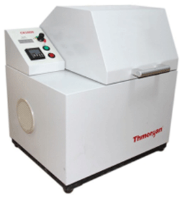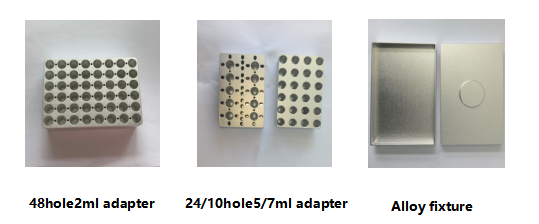Product
All categories

High throughput tissue grinder
Model:CK1000
First, product use
1. Suitable for grinding and crushing all kinds of plant tissues including roots, stems, leaves, flowers, fruits, seeds and other samples;
2. Suitable for grinding and crushing all kinds of animal tissues including liver, thymus, kidney, intestine, lymph nodes, muscle, bone and other samples;
3. Suitable for grinding and crushing fungi, bacteria and other samples;
4. Suitable for grinding and crushing of food and drug component analysis and detection;
5. Suitable for grinding and crushing of volatile samples including coal, oil shale, wax products and other samples;
6. Suitable for grinding and crushing of plastics, polymers including PE, PS, textiles, resins and other samples.
Two, product characteristics
1. National invention patent: ZL201110168356.2, passed CE certification;
2. Vertical oscillation: large stability, sample broken thoroughly;
3. High efficiency: complete sample crushing within 2 minutes;
4. High throughput: a maximum of 2×96 samples are processed at one time;
5. Large processing capacity: 2×50ml steel tank can be broken large volume samples;
6. Wide range of adapters: 2×48×2ml adapter, 2×24×5ml adapter, 2×10×7ml adapter can choose freely;
7. High safety: with safety door and safety lock;
8. No cross contamination: the sample tube is fully closed during the crushing process to avoid cross contamination;
9. Low noise: the operating sound of the instrument is less than 70dB, which will not interfere with other experiments or instruments.
Three, product principle
The vertical oscillation and high-frequency reciprocating motion of the oscillation system make the frozen sample in the grinding tube collide with the grinding ball, and the grinding shear force and impact force produced by the system make the tissue completely broken.

four. Technical parameters
1. Host parameters:
1.1 Vertical oscillation frequency: 500-1800 times /min;
1.2 Grinding time: 10-99 minutes, user can set;
1.3 Number of grinding platforms: 2;
1.4 Grinding ball material: stainless steel, chromium steel, zirconia, tungsten carbide, quartz sand;
1.5 Grinding ball diameter: 0.5-30mm;
1.6 Fixture travel 3.7cm(vertical);
1.7 Adaptor is resistant to low temperature and can be soaked in liquid nitrogen for more than 30 minutes;
1.8 Open door and power off function to ensure safety;
1.9 Power: 400W;
1.10 Power supply: 3-hole socket, 220-240V,50Hz;
1.11 Weight: 62kg;
1.12 Size: 38cm(W)×46cm(D)×50cm(H).
2. Adapter parameters:
The adapter is used to hold the grinding tube containing the grinding ball and sample, and is positioned in the middle of the alloy fixture for use on the equipment. 48 holes (2ml), 24 holes (5ml), 10 holes (7ml) are optional.

3. Parameters of grinding tube (tank) :
The grinding tank is used to hold the grinding ball and sample, which is directly clipped to the main engine for use. The grinding tube holds the grinding ball and sample. The deep hole plate can replace the adapter, directly contain the sample and grinding ball, installed on the main machine for grinding.

4. Grinding ball parameters:
The grinding ball is used to help the sample break thoroughly. Various specifications are available according to requirements.


five. Product configuration
1. One main machine;
2. A set of alloy fixture;
3. A set of grinding balls.
4. Adapter:
48-hole 2ml adapter 1 pair (standard);
24/10 hole 5/7ml adapter 1 pair (optional);
50ml Grinding can 1 pair (optional).
Six, operation steps
1. Add the treated sample and grinding ball into the grinding tube successively;
2. Put the grinding tube loaded with sample into the adapter;
3. Freeze the adapter with sample in liquid nitrogen for a few minutes;
4. Put the frozen sample and adapter in the middle of the fixture and adjust the position;
5. Place the fixture on the sample table, position the positioning slot, tighten the vertical positioning knob, and return the lock safely;
6. Cover the safety door of the machine;
7. Set vibration frequency and vibration time;
8. Start the machine and execute the crushing process;
9. Wait until the machine stops vibrating and shuts down, open the safety door, and take out the sample;
10. Return the instrument.
Seven, precautions
1. The instrument should be placed in a dry and ventilated environment for use;
2. The sample is distributed symmetrically in the sample clip to ensure the balance of the sample clip;
3. Before closing the safety door, ensure that the fixture is completely fixed without loosening;
4. The oscillation frequency shall not exceed the maximum range of 1800 times /min;
5. When freezing samples, attention should be paid to prevent liquid nitrogen from sputtering




